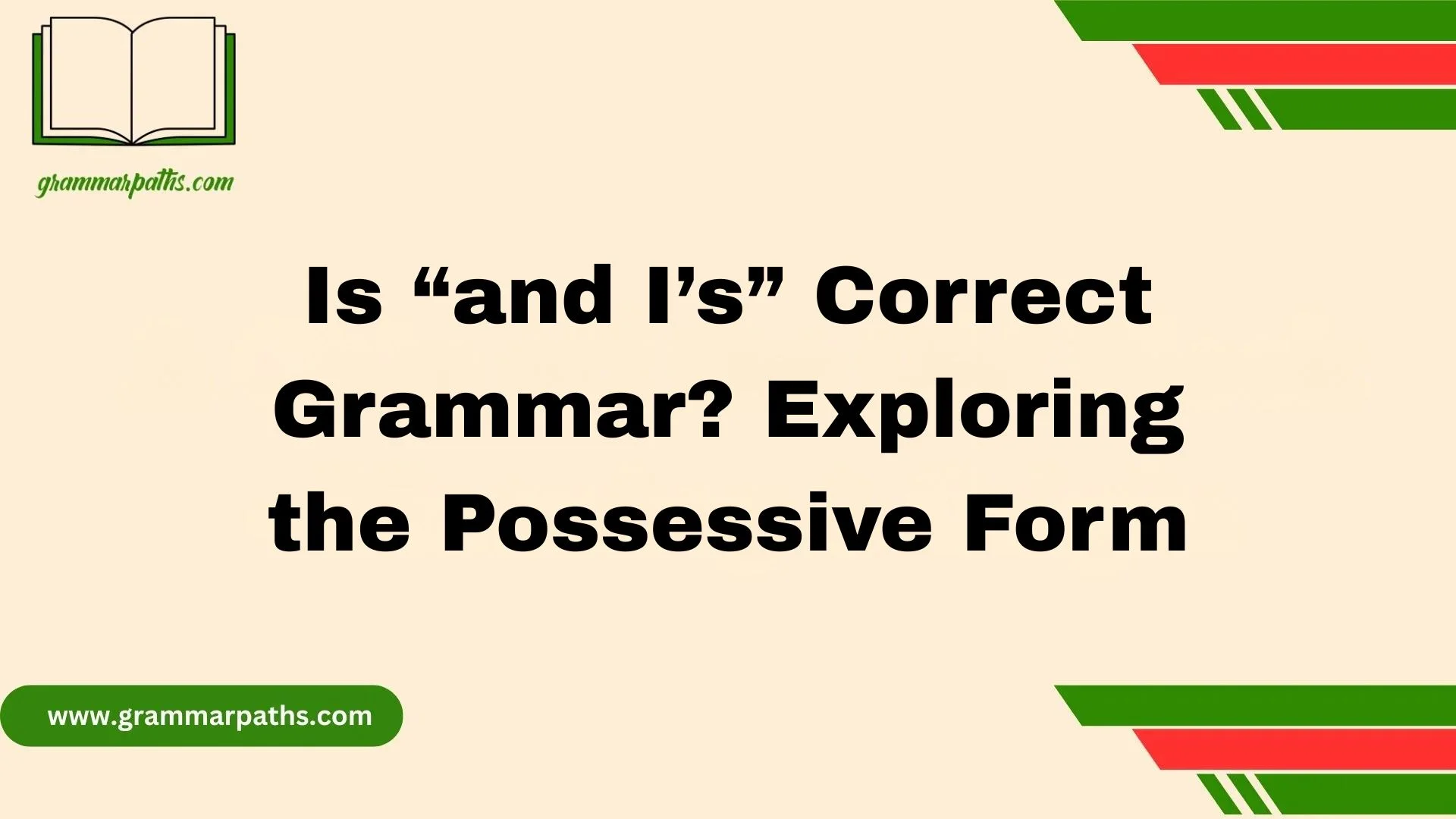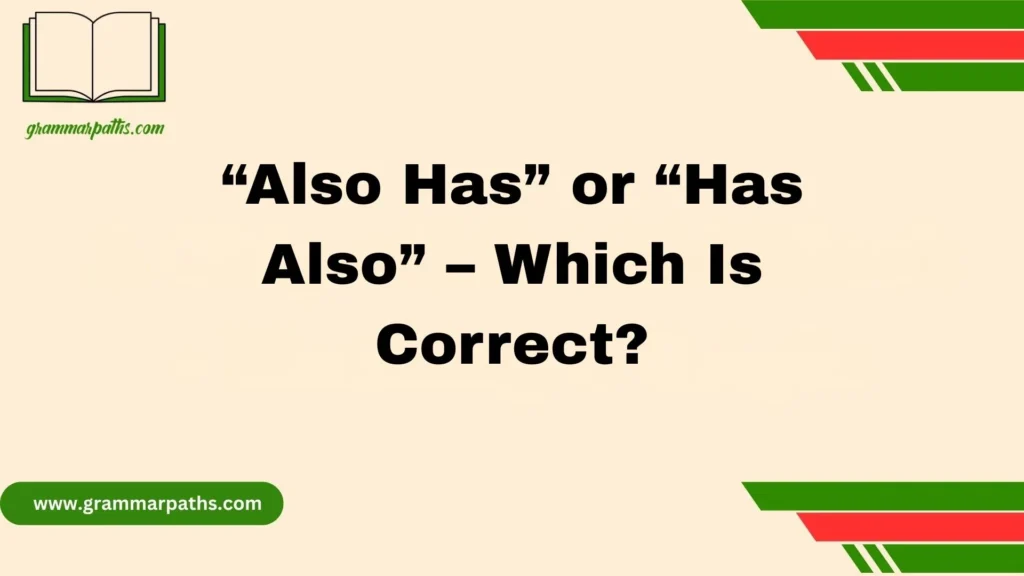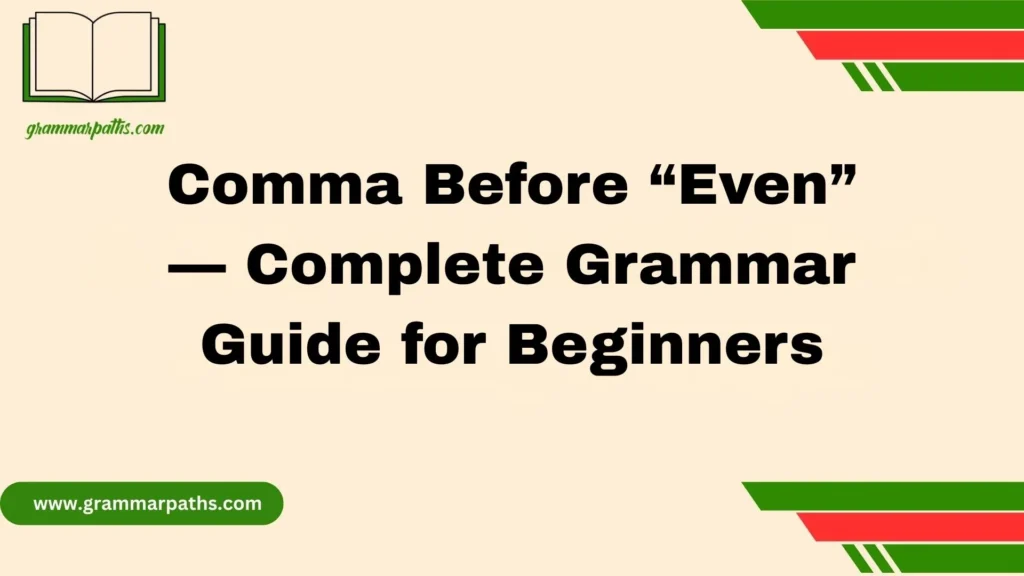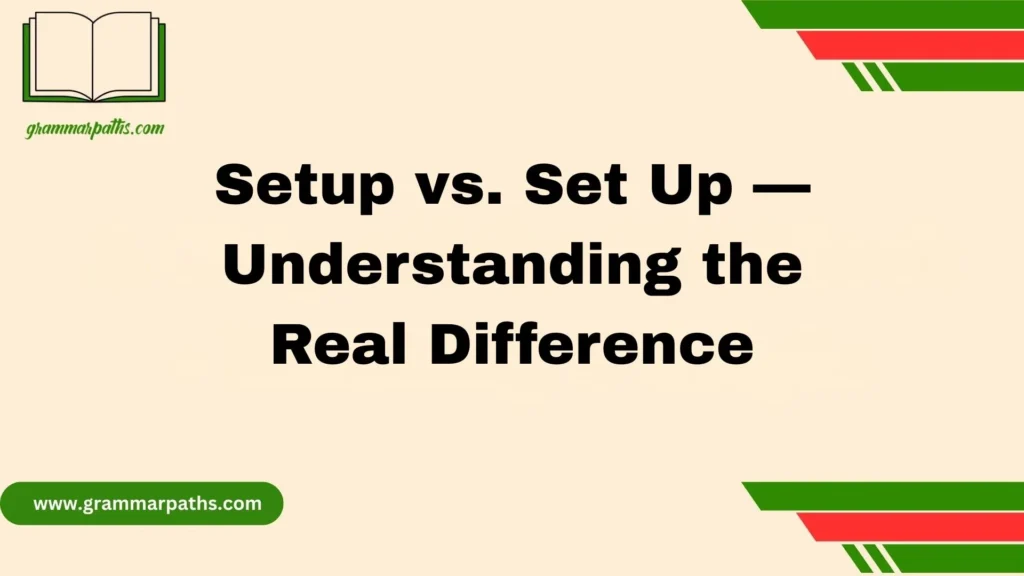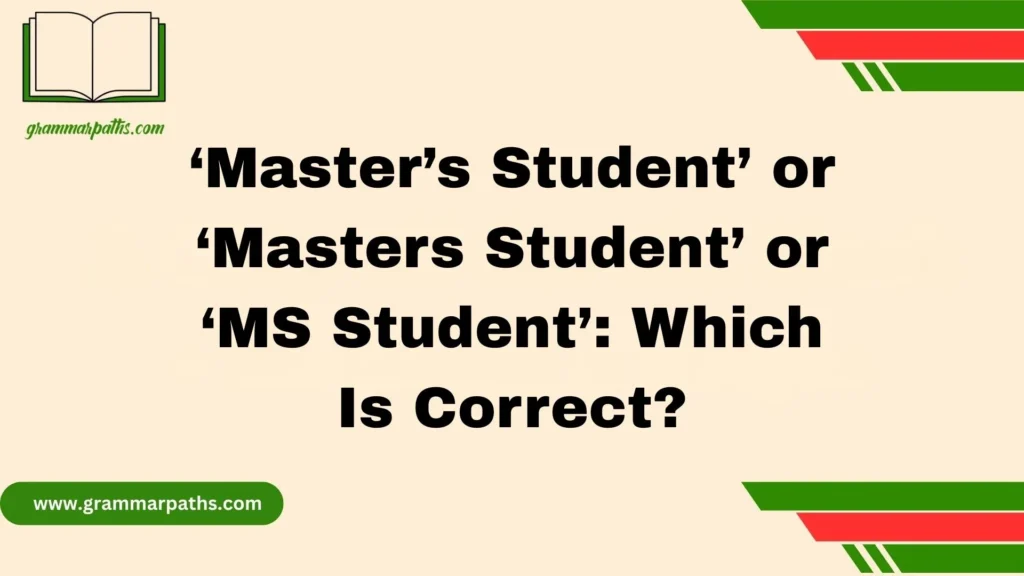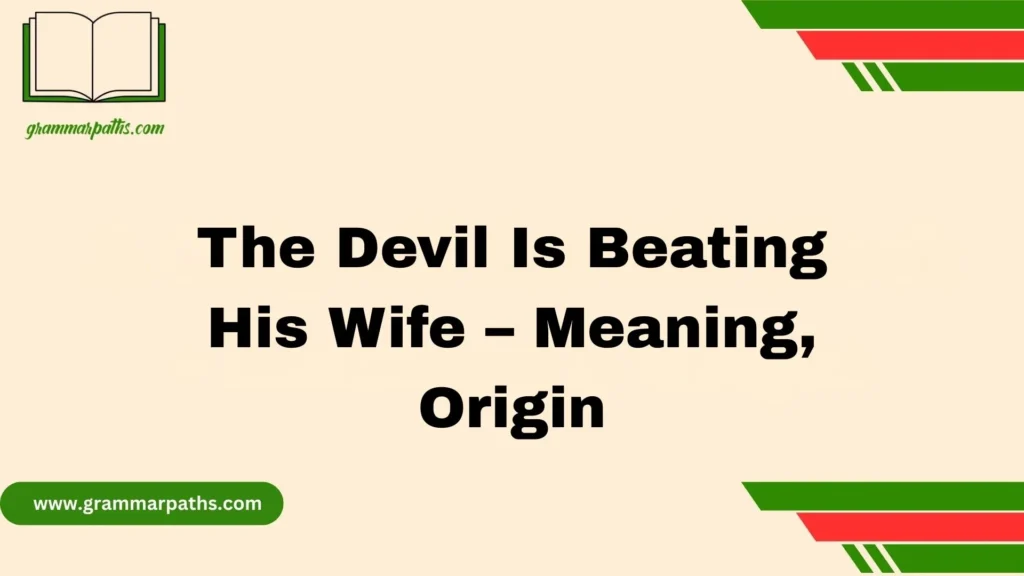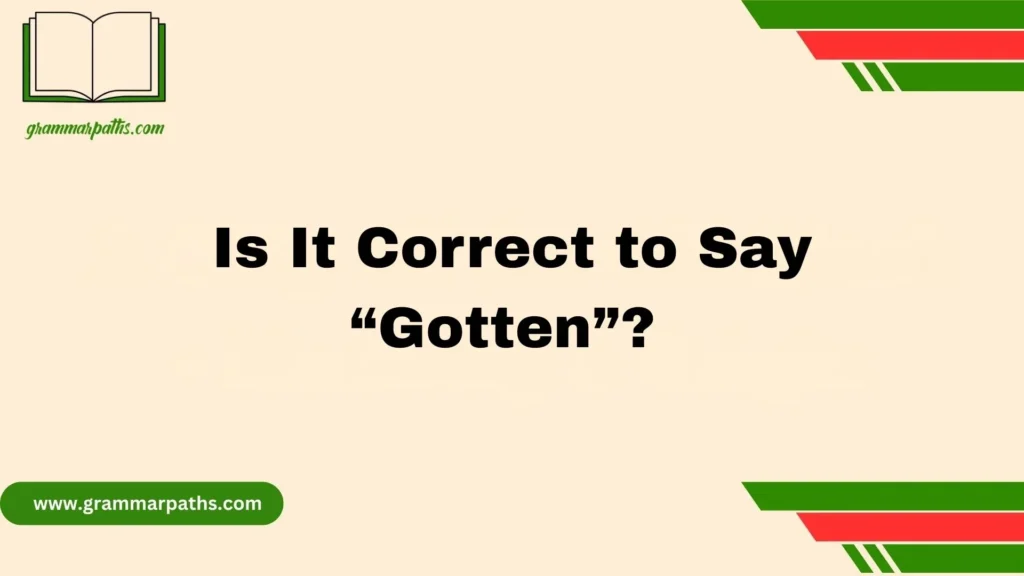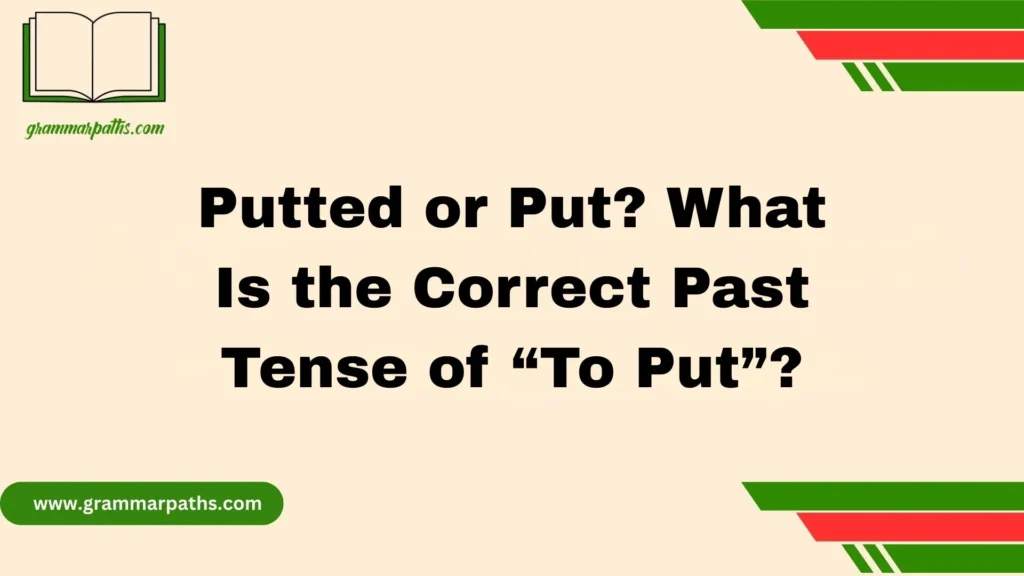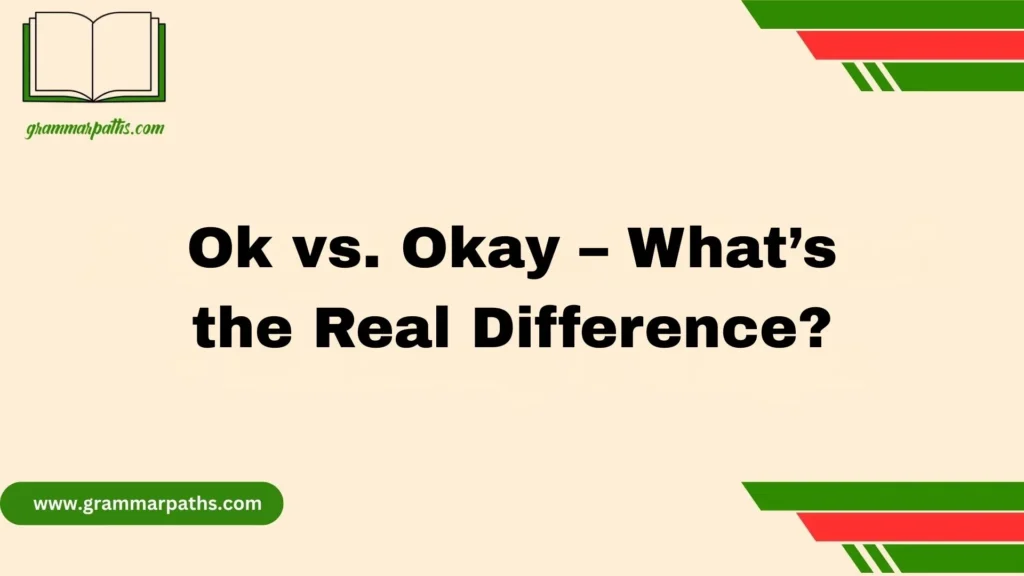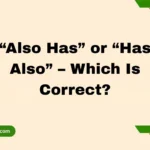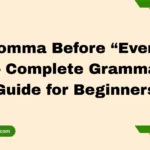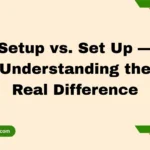When learning English, many people face confusion over the phrase “and I’s”, which feels natural in speaking but incorrect in writing. In grammar, the possessive form shows ownership, usually by adding ‘s to a noun or pronoun. However, rules and exceptions often make it a puzzle when two names share possession. For instance, in proper English, we say “John and my book,” not “John and I’s book.” The second expression sounds strange and doesn’t fit the natural forms of correct grammar. When talking about something that belongs to both you and another person, such as John, the clear and right way to express possession is through proper usage rather than repetition. That’s where the question, “Is ‘and I’s’ Correct Grammar? Exploring the Possessive Form,” becomes a key part of understanding how ownership and language interact in everyday usage.
Having taught English for years, I’ve helped learners navigate tricky waters where this mistake often appears in spoken grammar. The understanding of compound nouns helps explain this better. If Dick and Jane own a house together, we say “Dick and Jane’s house was struck by lightning.” But if they each own their own car, then “Dick’s and Jane’s cars were vandalized.” The rule is simple: when multiple people co-own one thing, only the last name gets the ‘s, but when each owns a version of the same item, both names do. This example helps you understand why “and I’s” feels incorrect, even if it’s common in spoken English, reinforcing the importance of learning proper forms through real-life examples and consistent usage.
The Grammar Question Everyone Argues About
English grammar can feel like a riddle wrapped in punctuation. You might hear someone say:
“My brother and I’s house is up for sale.”
It sounds almost natural. After all, we say “my brother and I” all the time, right? But here’s the catch — “I” is never used with an apostrophe to show possession. The structure looks wrong because it breaks a fundamental rule of English pronouns.
People say “and I’s” because it feels right in speech. Spoken English often takes shortcuts for flow and rhythm. But in writing (and formal speech), correctness matters.
So how should you actually show possession when you and someone else share ownership?
Before we fix it, let’s revisit what “possession” really means in grammar.
Understanding Possessives in Plain English
Possession in English simply means showing ownership — who something belongs to.
We usually form possessives by adding ’s or using special possessive pronouns.
Here’s a quick breakdown:
| Type | Example | Correct Possessive | Notes |
| Singular noun | the boy | the boy’s | add apostrophe + s |
| Plural noun | the boys | the boys’ | add apostrophe only |
| Pronoun | I | my | pronouns use unique possessive forms, not apostrophes |
Possessive Pronouns vs. Nouns
- Nouns use apostrophes: John’s car, the teacher’s desk.
- Pronouns change form: I → my, he → his, she → her, we → our.
That’s why “I’s” doesn’t exist. The possessive of I is my, not I’s.
When you try to merge “my friend and I” into a possessive phrase, you can’t just tack on ’s — English grammar doesn’t allow it.
Why “and I’s” Sounds Right But Isn’t
Let’s be honest: “My wife and I’s house” sounds okay at first. Spoken English often bends grammar rules for ease. But written English demands accuracy.
Here’s why it’s incorrect:
- “I” is a subject pronoun.
- Pronouns form possession through unique possessive words (my, our, his, her, etc.), not by adding ’s.
So, “I’s” violates that pattern.
Quick Comparison
| ❌ Incorrect | ✅ Correct |
| My brother and I’s house | My brother’s and my house |
| Me and I’s conversation | Our conversation |
| You and I’s dog | Our dog |
In English, the possessive form applies only to nouns, not subject pronouns like I or we. That’s why we have to rewrite the sentence instead of forcing a structure like “and I’s.”
Breaking Down Pronoun Possession
When two people share ownership—say, John and I—we call it a compound subject. To show possession, you need to make sure the possessive marker (’s) applies properly.
The General Rule
- If two or more people share ownership, only the last name or noun takes the apostrophe + s.
- If ownership isn’t shared, each name gets its own apostrophe + s.
| Situation | Example | Meaning |
| Shared ownership | John and Mary’s house | They share one house |
| Separate ownership | John’s and Mary’s houses | Each owns a separate house |
So for “John and I,” you can’t just write “John and I’s.” You need to use the possessive form of I, which is my.
✅ Correct: “John’s and my car”
Sounds a little clunky, right? That’s why many people prefer “our car.”
Why “My Wife and I’s Car” Is Grammatically Incorrect
Let’s analyze this common example step by step:
“My wife and I’s car is parked outside.”
It might roll off the tongue naturally, but it’s still grammatically wrong. Here’s why:
- “I” can’t take an apostrophe.
- The possessive must apply either to the noun (wife) or be rephrased to include a possessive pronoun (my).
Correct Alternatives
- ✅ “My wife’s and my car” (grammatically correct but sounds awkward)
- ✅ “Our car” (clear, concise, and natural)
- ✅ “The car belonging to my wife and me” (formal but correct)
👉 When in doubt, use “our” to simplify shared ownership between you and another person. It’s elegant and always correct.
The Right Way to Express Joint Ownership
Here’s a quick guide to make possessive forms effortless:
| Situation | Correct Form | Example |
| Shared ownership | John and Mary’s | John and Mary’s home |
| Separate ownership | John’s and Mary’s | John’s and Mary’s jobs |
| Involving pronouns | my friend’s and my | My friend’s and my trip |
| Rephrased form | our | Our trip was fantastic |
Key Takeaways
- Don’t ever write “and I’s.”
- Use our whenever possible—it’s smoother and 100% correct.
- When formality matters, use “my friend’s and my,” though it can sound stiff.
Grammar Tip: If a phrase sounds awkward, rewrite it. Clarity always beats rigidity in English.
Fixing the “and I’s” Error in Real Sentences
Let’s look at how we can transform common mistakes into polished sentences:
| ❌ Incorrect | ✅ Correct |
| My boss and I’s meeting was canceled. | My boss’s and my meeting was canceled. |
| Me and I’s friendship grew stronger. | Our friendship grew stronger. |
| My parents and I’s vacation was fun. | Our vacation was fun. |
| You and I’s plan worked perfectly. | Our plan worked perfectly. |
Pro tip: If “our” works, use it. It’s simple, accurate, and natural.
Why Rewriting Works Better
Rephrasing eliminates awkward grammar and makes your sentence flow. English values readability and rhythm — if a sentence feels clunky, there’s usually a smoother way to say it.
How to Handle Mixed Pronouns: “He and I’s,” “She and My,” etc.
Here’s where things get messy.
When two pronouns mix—like he and I or she and my—English doesn’t have a neat rule.
| ❌ Incorrect | ✅ Correct | ✅ Better Alternative |
| He and I’s project was late. | His and my project was late. | Our project was late. |
| She and my idea worked. | Her and my idea worked. | Our idea worked. |
| You and I’s photo won. | Your and my photo won. | Our photo won. |
Both “his and my” and “her and my” are technically correct, but they sound unnatural in casual writing.
Pro Tip: Whenever you’re tempted to say “and I’s,” think “our.”
It’s cleaner, universally accepted, and grammatically sound.
Common Mistakes and Easy Fixes
Even advanced English speakers mix up possessives. Here’s a quick look at the most common offenders and their fixes:
| ❌ Wrong | ✅ Right |
| Her and I’s room | Our room / Her and my room |
| My parents and I’s home | Our home / My parents’ and my home |
| You and I’s agreement | Our agreement |
| Me and I’s project | Our project |
| He and I’s schedule | Our schedule / His and my schedule |
Quick Grammar Test
Want to know if your sentence is right? Try this:
- Replace the phrase with a single pronoun.
- If “I’s” doesn’t work alone (I’s car → nonsense), it’s wrong.
- Try “our” instead.
- If it makes sense (our car → correct), use it.
That test works every time.
Practical Tips for Mastering Possessives
Here’s a simple, four-step approach to always get possessives right:
- Identify who owns the thing.
- Example: “John and I own a house.”
- Decide if ownership is shared or separate.
- Shared: John and Mary’s car
- Separate: John’s and Mary’s cars
- Use apostrophes only with nouns, not pronouns.
- John’s is fine; I’s is not.
- If pronouns are involved, rewrite for clarity.
- “My friend’s and my” or “our” are both acceptable.
Mnemonic Tip
“Pronouns don’t take apostrophes for possession — only nouns do.”
When in Doubt
If you ever find yourself stuck between grammar correctness and natural flow, prioritize clarity. Readers appreciate sentences that sound human, not robotic.
Case Study: Grammar in Real-World Writing
Consider how businesses and media outlets handle possessives.
Example 1:
- ❌ “My partner and I’s company values teamwork.”
- ✅ “Our company values teamwork.”
Corporate communication favors our because it’s natural, short, and unambiguous.
Example 2:
- ❌ “The CEO and I’s decision was final.”
- ✅ “The CEO’s and my decision was final.”
- ✅ “Our decision was final.” (best for readability)
Professional editors at outlets like Grammarly and Cambridge Dictionary recommend rewriting rather than forcing awkward grammar.
“Good writing is clear writing. If it sounds wrong, it probably is.” — Grammarly Blog
The Bottom Line: Keeping It Clear and Correct
Let’s recap what we’ve learned:
- “And I’s” is never grammatically correct.
- English pronouns form possession through unique possessive forms (my, our, his, her), not by adding ’s.
- Shared ownership means only the last name takes the apostrophe + s.
- When pronouns are involved, use “my,” “our,” or rephrase for clarity.
Golden Rule
When in doubt, replace awkward phrasing with “our.” It’s always correct when two people share ownership.
Good grammar doesn’t mean sounding fancy — it means being clear and natural.
Bonus: Quick Reference Chart
Here’s a simple cheat sheet you can bookmark or print:
| Ownership Type | Correct Form | Example |
| Single noun | John’s | John’s hat |
| Plural noun | The boys’ | The boys’ toys |
| Shared ownership | John and Mary’s | John and Mary’s vacation |
| Separate ownership | John’s and Mary’s | John’s and Mary’s pets |
| With pronouns | My friend’s and my | My friend’s and my house |
| Simplified form | Our | Our house |
| Incorrect form | and I’s | ❌ Never correct |
FAQs about “and I’s”
1. Is “and I’s” ever grammatically correct?
No, “and I’s” is not considered correct grammar in proper English. Instead, use “John and my” or rephrase to make the ownership clear.
2. Why do people say “and I’s” in conversation?
In spoken English, people sometimes use it naturally without realizing it’s incorrect. It sounds right because “I” often follows “and”, but it doesn’t work for the possessive form.
3. What’s the correct way to show shared possession?
When two people share ownership of one thing, add ‘s only to the second name, as in “Tom and Jerry’s house.” But if they own separate items, add ‘s to both names — “Tom’s and Jerry’s cars.”
4. How can I remember the rule easily?
Think of it as a combination rule: one item = one ‘s, two items = two ‘s. This helps you navigate the tricky grammar without confusion.
Conclusion
Understanding how possessive forms work in English grammar is key to avoiding mistakes like using “and I’s.” By remembering the rules for compound nouns and shared possession, you’ll express ownership clearly and confidently. The phrase may sound common in spoken English, but mastering the correct form—like “John and my book”—makes your writing and speaking sound polished, natural, and unmistakably right.

Grace Marie is the dedicated writer behind GrammarPaths.com, where she shares her passion for English grammar, idioms, and writing mastery. With a strong background in language studies and years of experience helping learners improve their communication skills, Grace creates clear, practical, and engaging content that makes English easy to understand.
